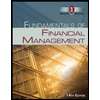Assume that your company is trying to determine its optimal capital structure, which consists only of debt and common stock. To estimate the cost of debt, the company has produced the following table: 9.86% 9.56% Percent Financed Percent Financed With Debt With Equity 10.16% O 8.96% 9.26% 0.10 0.20 0.30 0.40 0.50 0.90 0.80 0.70 0.60 0.50 Debt/Equity Ratio 0.10/0.900.11 0,20/0.80 0.25 0.30/0.70 = 0.43 0.40/0.600.67 0.50/0.50 = 1.00 Now assume that the company's tax rate is 40 percent, that the company uses the CAPM to estimate its cost of common equity, Ks, that the risk-free rate is 5 percent and the market risk premium is 6 percent. Finally assume that if it has no debt its WACC would be equal to its cost of equity which would be equal to 11 percent (you should now be able to determine its "unlevered beta," bu). Bond Rating AA A A Given this information, determine the firm's cost of capital if it finances with 40 percent debt and 60 percent equity. BB B Before-Tax Cost of Debt 7.0% 7.2% 8.0% 8.8% 9.6%
Cost of Capital
Shareholders and investors who invest into the capital of the firm desire to have a suitable return on their investment funding. The cost of capital reflects what shareholders expect. It is a discount rate for converting expected cash flow into present cash flow.
Capital Structure
Capital structure is the combination of debt and equity employed by an organization in order to take care of its operations. It is an important concept in corporate finance and is expressed in the form of a debt-equity ratio.
Weighted Average Cost of Capital
The Weighted Average Cost of Capital is a tool used for calculating the cost of capital for a firm wherein proportional weightage is assigned to each category of capital. It can also be defined as the average amount that a firm needs to pay its stakeholders and for its security to finance the assets. The most commonly used sources of capital include common stocks, bonds, long-term debts, etc. The increase in weighted average cost of capital is an indicator of a decrease in the valuation of a firm and an increase in its risk.

Trending now
This is a popular solution!
Step by step
Solved in 3 steps with 2 images









